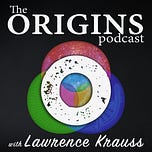John Mather is an astrophysicist at NASA who has been involved in important space missions to probe our fundamental understanding of the Universe for over four decades. He helped lead the design and deployment of the Cosmic Background Explorer Satellite (COBE), which launched in 1989 to probe the cosmic microwave background radiation from the Big Bang with a precision that could not be obtained from terrestrial experiments because of absorption of radiation by the atmosphere. The experiments on COBE, and its successor missions WMAP and PLANCK, literally have turned cosmology from an art to a science, allowing the precise measurement of cosmological observables that previously were either not measured at all or only measured to within a factor of two. This has led to a golden age of cosmology, where theories of the early universe can now be compared directly to observation.
John directed the building of the Far Infrared Absolute Spectrophotometer (FIRAS) on COBE which was able to show that the cosmic microwave background radiation was indeed an almost perfect ‘black body’ spectrum associated with a very well defined temperature of the Universe at a time of about 300,000 years after the big bang. Indeed, no terrestrial experiment has ever produced such an accurate black body spectrum, which was one of the fundamental predictions that helped develop quantum mechanics early in the 20th century.
For his work on COBE, John shared the Nobel Prize with George Smoot. But John didn’t rest on his laurels, for several decades after COBE John helped lead the design and development of the James Webb Space Telescope, which recently launched and will probe both the very early universe and also extra solar planets, possibly helping us discover evidence for life elsewhere in the Universe.
John and I talked about his origins in science, the science he has accomplished, and what his future plans are in a discussion that will help provide a valuable perspective for anyone on the current status of cosmology and astrophysics, as well as what we might learn in the future.
The ad-free video is available for all paid subscribers to Critical Mass in an adjoining post.. Video with ads will be available on the Podcast YouTube Channel, and audio is also available wherever you listen to podcasts. Enjoy!







Share this post